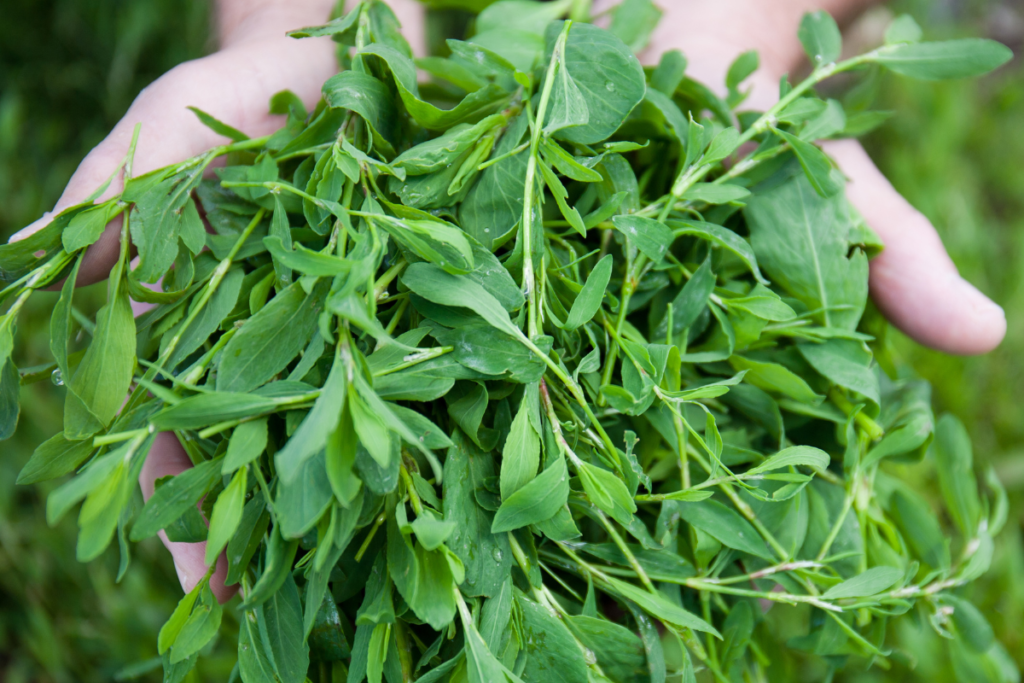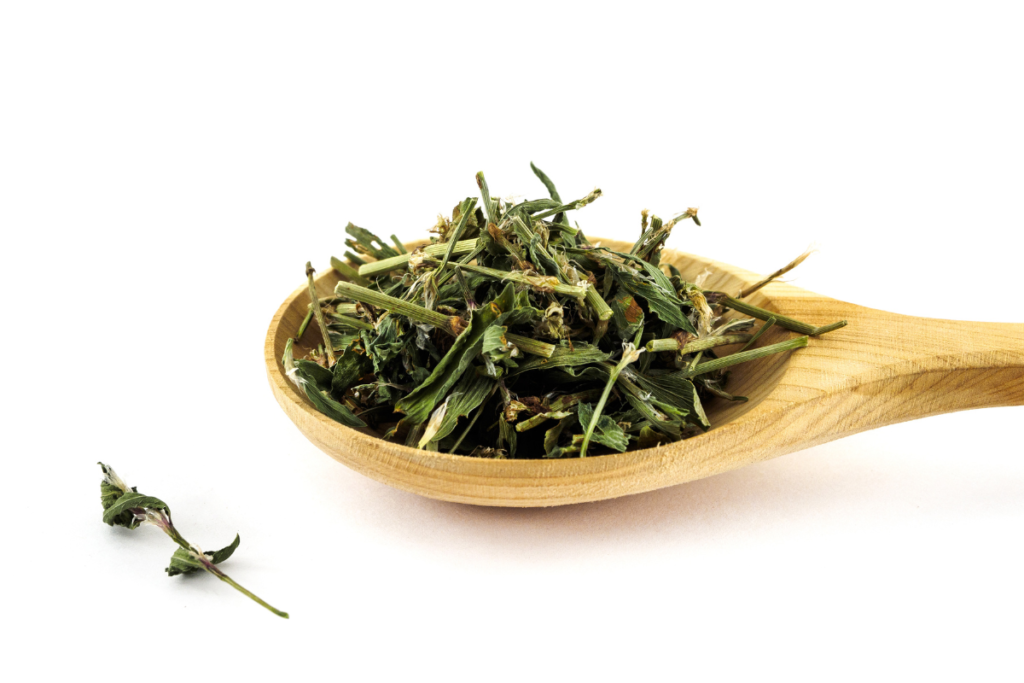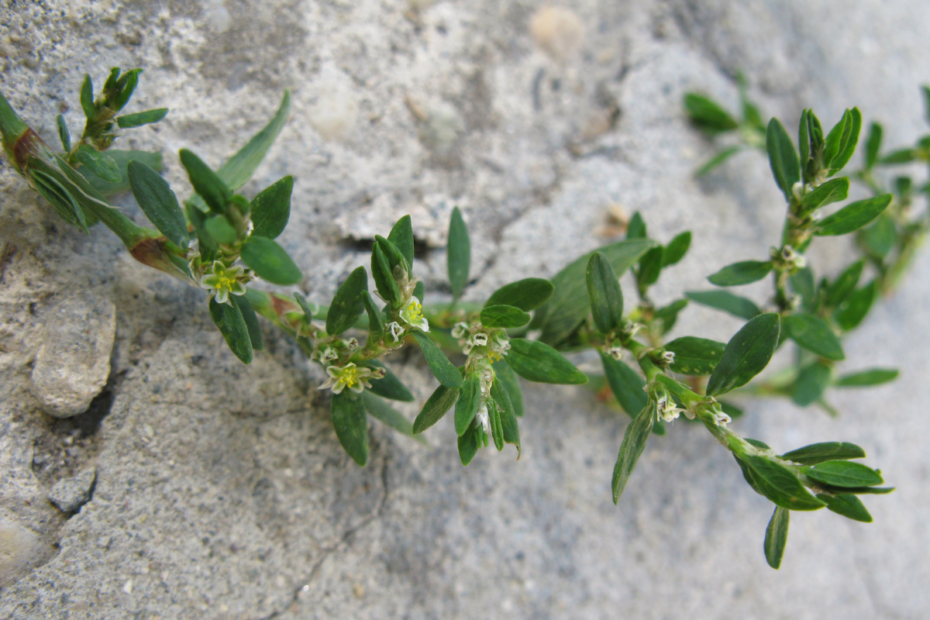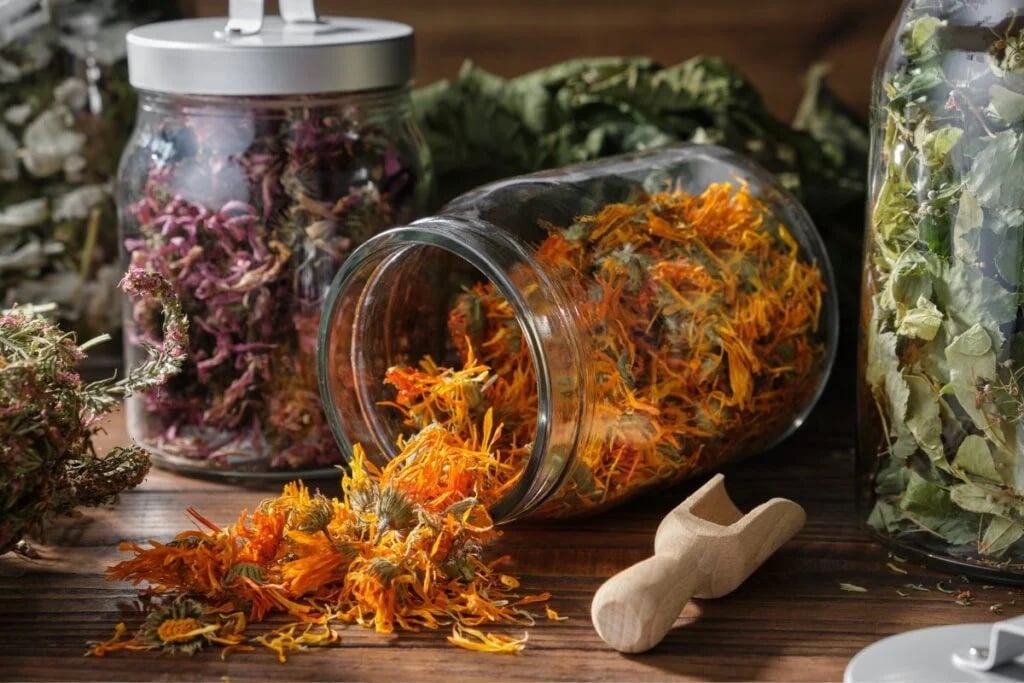Although gardeners regard the knotgrass as a weed, people have valued it for a long time for its healing properties. Knotgrass tea offers notable health benefits; instead of discarding it while weeding the garden, you can collect it as a beneficial medicinal herb. Let’s explore how to recognize knotgrass, its potential advantages for health, and how to prepare herbal tea from knotgrass, as well as ointments for skin conditions.
A Brief Overview of Knotgrass
Knotgrass (Polygonum aviculare) belongs to the buckwheat family (Polygonaceae). It is an annual herb that can grow up to 40 cm in height. Its stems may spread across the ground or rise upright, its leaves are small, its flowers are greenish, and its fruits are dark, nut-like seeds. The plant thrives in many temperate regions worldwide, with origins traced back to Eurasia and North America. In the Himalayas of India, it grows at elevations of 2,200 to 3,800 meters. Despite its reputation as a weed, people traditionally used knotgrass for soothing and restorative tea.
Knotgrass is common in sunny areas such as meadows, gardens, cereal fields, and even in less favorable habitats. More accurate spaces are along footpaths, in cracks of sidewalks and paved surfaces, by roadsides, on railway embankments, and along sandy, gravelly, or rocky riverbanks. It adapts well to compact soils that are rich in nutrients but low in air circulation. Knotgrass blooms throughout the summer. In gardens, people often pull out and discard them; however, those familiar with its value collect it for home use.
Medicinal Use
The flowering aerial parts of knotgrass are most suitable for medicinal purposes. You can harvest it by cutting the weed close to the roots from early summer until autumn, while the plant is still in bloom. During this period, it is richest in biologically active compounds, including vitamins C and E, carbohydrates, carotenoids, mineral salts, and essential oils.

Knotgrass on Your Plate
Beyond its medicinal qualities and traditional use in teas, you can also incorporate knotgrass into everyday meals. Let’s try to eat young plants raw or lightly cooked, making a nutritious addition to salads and soups. Dried and crushed knotgrass can serve as a seasoning for soups and hot dishes. Its edible seeds have a flavor and nutritional profile reminiscent of buckwheat, though they are smaller and more challenging to harvest. In times of famine, knotgrass seeds served as perfect material for bread baking.
The Health Benefits of Knotgrass Tea
People most commonly consume knotgrass as a tea because of its wide range of therapeutic effects:
- Traditional use undeniably supports its effectiveness against respiratory infections, as it helps alleviate symptoms such as colds, runny noses, and coughs. The tea has expectorant and anti-inflammatory properties because it promotes the clearing of mucus and makes breathing easier. Likewise, silicic acid in knotgrass enhances lung tissue, making the herb useful in cases of bronchitis, pulmonary edema, and tracheitis.
- Rich in silica and flavonoids, knotgrass supports vascular health, improves circulation, reduces cardiac strain, and may lower the risk of atherosclerosis and stroke.
- Used as a mouth rinse, strong knotgrass tea can reduce gum inflammation and protect against cavities.
- Its flavonoids and phenolic compounds act as powerful antioxidants, protecting cells from damage caused by free radicals.
- Knotgrass is traditionally believed to prevent and eliminate kidney stones.
- Acting as a natural anti-parasitic remedy, it can help expel intestinal worms without harming the host.
- It serves as a diuretic and anti-inflammatory agent, supporting kidney function, reducing swelling, lowering blood pressure, and promoting the removal of excess fluids.
- It has been used to ease painful menstruation.
- Early research suggests potential anti-cancer properties due to its antioxidant and phenolic content, though more studies are needed to confirm effectiveness.
- Knotgrass supports the immune system, helps detoxify the body, and has been applied externally to stop nosebleeds and treat skin ulcers.
- Its disinfectant qualities make it suitable for urinary tract infections.
Knotgrass Tea Benefits for External Uses
The benefits of knotgrass are not only limited to internal treatment—you can also widely use it in beauty rituals and external treatment, such as:
- Its antioxidant compounds also make it valuable for skincare. Knotgrass tea supports collagen and elastin production, reduces fine lines, improves elasticity, and gives the skin a firmer, more youthful appearance.
- Soaking feet in knotgrass decoction relieves fatigue, while rinsing hair with it strengthens hair fibers.
- Knotgrass tea may ease joint pain by flushing out crystal deposits, reducing inflammation, and supporting arthritis treatment.
- Knotgrass may improve blood clotting, stopping bleeding after childbirth, without increasing blood viscosity.

How to Prepare Knotgrass Tea
For cough relief: Boil one glass of water, add 1 tablespoon of chopped knotgrass, and simmer gently for 5–10 minutes. Strain and drink half a glass 3–4 times daily, about 30 minutes before meals.
For overall health and vitality: Simmer 10 g of chopped knotgrass in 2 glasses of water for 20 minutes. Cover and let steep for two hours. After that, strain it. Drink half a glass three times a day for 3–5 weeks. After a one-week break, you may repeat the course if desired.
For kidney inflammation (pyelonephritis): Simmer one teaspoon of chopped knotgrass in a cup of milk for 5–10 minutes. Strain and drink three times daily for a week.
For nosebleeds: Apply fresh knotgrass juice directly to the nasal area twice daily.
Knotgrass Bath for Skin and Joint Health
You can add a decoction of knotgrass to bathwater for eczema, dermatitis, acne, boils, spinal osteochondrosis, polyarthritis, or inflammatory conditions. Boil 300 g of knotgrass in 3–5 liters of water for two hours, strain, and add the liquid to a warm bath. Soak for at least 15 minutes.
Knotgrass Ointment for Skin Conditions
To prepare a simple home remedy, chop 100 g of knotgrass and cover it with vegetable oil. Let the mixture sit for 10 days, strain, and apply the infused oil to the affected skin. You can also apply freshly crushed leaves directly as a poultice, or use knotgrass hydrosol as a skin spray.
Possible Side Effects and Precautions
Like all medicinal herbs, knotgrass should be used with caution and awareness of individual health conditions:
- In some people, it may increase sensitivity to sunlight.
- People with arthritis, gout, rheumatism, kidney stones, bladder inflammation, or high stomach acidity should monitor their condition carefully when using knotgrass.
- Avoid combining knotgrass tea with pharmaceutical medications.
- This weed alone, or knotgrass tea, is not recommended for pregnant or breastfeeding women.
- You should not use this grass supplement if you have high blood clotting levels.
- As with any natural remedy, it is best to consult a doctor or pharmacist before using knotgrass for therapeutic purposes.
Sources:
- https://www.asohm.com.au/ancient-current-uses-of-knotgrass/
- https://www.webmd.com/vitamins/ai/ingredientmono-537/knotweed
- https://www.clinikally.com/blogs/news/knotgrass-extract-skincare-secret-you-need-to-know?srsltid=AfmBOopkNb9yQNkmgqdRGsIF7KxSwq-Z1u8KMvLCudL7u2_gueIdjsOx
- https://www.rxlist.com/supplements/knotweed.htm
Associative photos © Canva.

